How to Take Care of Your Lawn in Winter
 Lee Burkhill: Award Winning Designer & BBC 1's Garden Rescue Presenters Official Blog
Lee Burkhill: Award Winning Designer & BBC 1's Garden Rescue Presenters Official Blog

When it comes to taking care of your lawn during winter, much of the maintenance requires preparation. Again, this isn’t an extensive amount of work, but there are a few points to take note of.
Now that the cold is seeping in, there’s no better time to hunker down with your to-do list and start planning your winter lawn regime. Here are our top tips for keeping your grass healthy.
Like we said before, much of the winter lawn prep happens before winter even begins. You’ll want to keep an eye on the forecast and make sure you get the following tasks in before the first frost:
First things first, you’ll want to aerate your lawn to make sure that air, water and other essential nutrients can circulate throughout the soil. Once the soil has been loosened, you can then spread a layer of fertiliser. The grassroots will absorb the nutrients provided by the fertiliser over time so that it gets a healthy head-start for spring. I always recommend a low nitrogen feed at the end of summer to set your lawn up for success during winter.
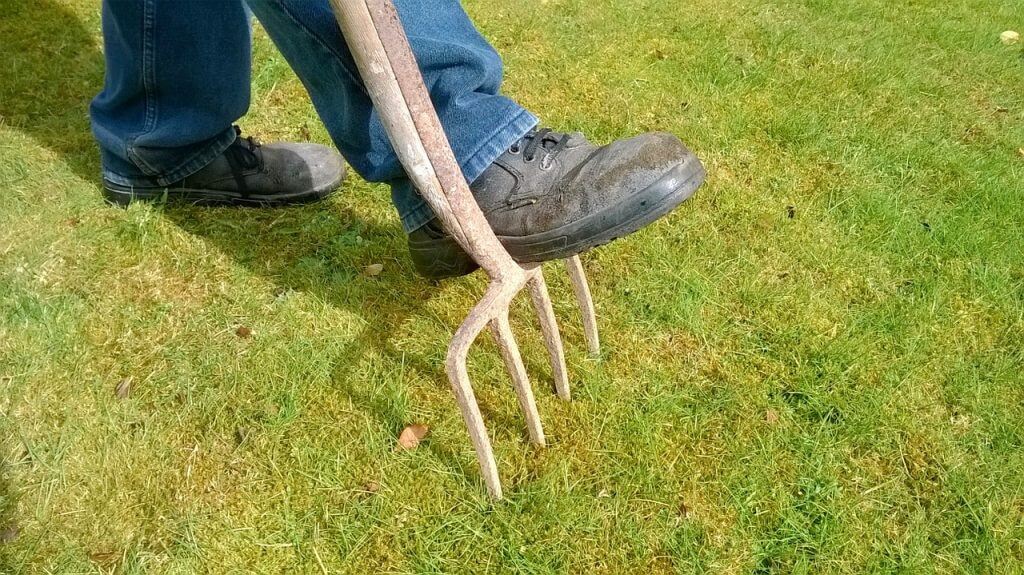
A build-up of wet, heavy leaves and debris can suffocate your lawn during winter, so clearing them up ahead of time through mulching, if the layer is thin, or raking will give your lawn room to breathe. Equally, you’ll want to clear off lawn furniture or toys for the season as well. You can then make leaf mould with the leaves to use as an excellent garden compost!
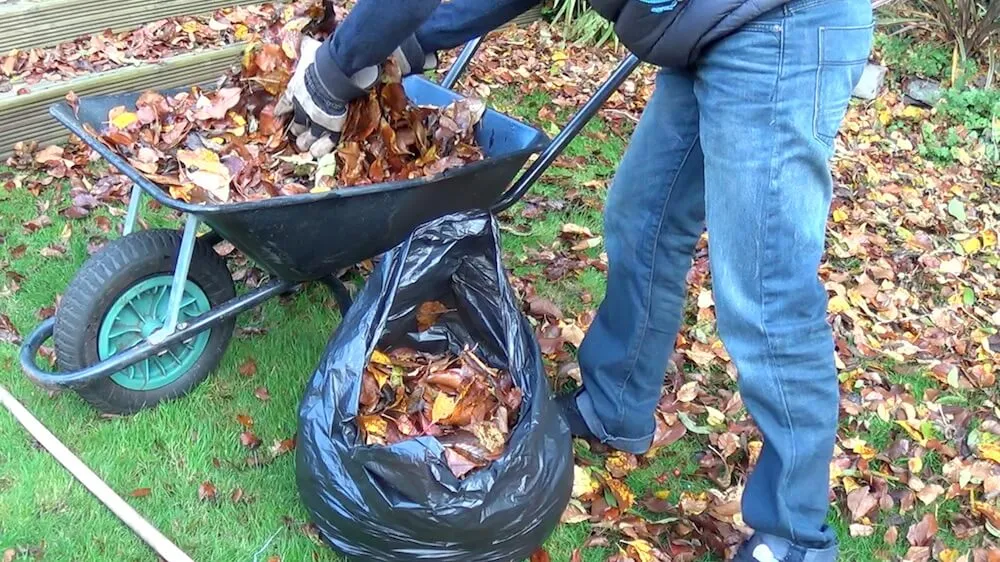
You’ll want to avoid walking on your lawn as much as possible throughout the winter, as heavy foot traffic can distress your already fragile grass. If you know your grass will be your primary winter walkway, consider creating a stone pathway for safe passage.

Creating a path will save not only your lawn from compaction but also your carpets from dirty footprints!
Did you know that you can take my course and learn how to become a Garden Ninja yourself? Click here for details
Lawn care certainly slows down during winter, but it doesn’t stop altogether. To ensure your grass is as healthy as it can be for spring, make sure you:
Just as you cleaned up your lawn pre-winter, you’ll want to keep it clean throughout the season. Collect stray branches and leaf build-up when necessary, as extra weight on your lawn can distress your grass.
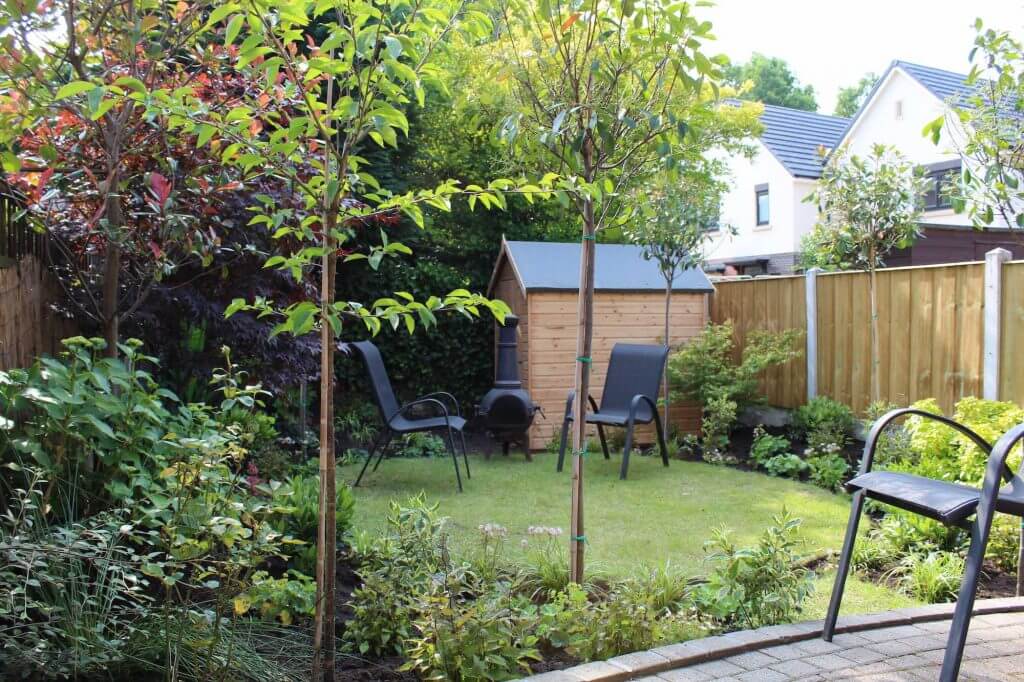
When ice and snow build up on your walkways, using your lawn as an alternative path is an easy choice. However, you should avoid walking on your grass as much as possible in the winter because although it is resilient, grass can have a difficult time recovering if it’s been trod on too regularly.
If you’ve salted your walkways and need to clear snowy build-up, avoid using your grass for storage, as rock salt drinks up water necessary for feeding your grass and causes it to brown. Salt can also not only harm your grass on the surface but at its roots, preventing it from thriving for years to come.
Optimally, you’ll want to mow your lawn just before winter sets in, ideally with a mulching mower is useful if leaf build-up isn’t too severe, as this will help feed your grass for the season to come.
But whether or not you should actually mow your lawn during the winter is a little trickier. You know you’re supposed to avoid walking on your lawn, but what if the grass is in need of a trim?
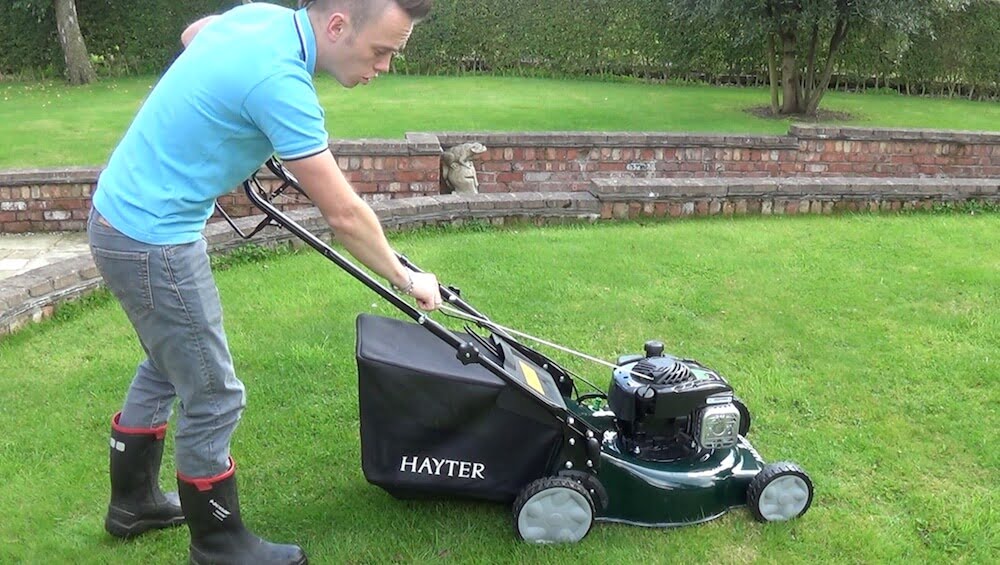
Mow is a last resort in winter on a high setting, but only when dry.
The short answer to this question is that you can mow if the weather is mild and your lawn is still growing. Either way, you’ll want to keep your mower on a high-cut setting, and even so, you’ll only want to do this occasionally. Never mow your lawn if the soil is soft or if your lawn is frosty or wet, as this can compact the soil and damage the grass.
Artificial turf is at the forefront of many homeowners’ minds, as it’s often seen as a no-maintenance option of the time-strapped gardeners’ dreams. And in the winter, it’ll stay green where live grass goes dormant. But is artificial grass all it’s cracked up to be?
In all honesty, no. As I explain in my tell-all blog post, artificial turf might look tantalising in the short term, but its environmental impact and overall lifespan make it a bad long-term investment. It still costs an average of £130-£160 per month over its 10-year life and will still need maintenance in the form of leaf collection, which you’ll be doing anyway with live grass.
Overall, the maintenance necessary to preserve grass in the winter is so negligible it’s worth the very little hassle of having a living lawn all year round. Now that winter is on its way, it’s time to bundle up and start getting our lawns in order.
Why not Tweet, Facebook or Instagram me with your lawn pictures? I may be able to help. You can also follow me on Youtube where I’ve got plenty of garden guide vlogs. Happy gardening!



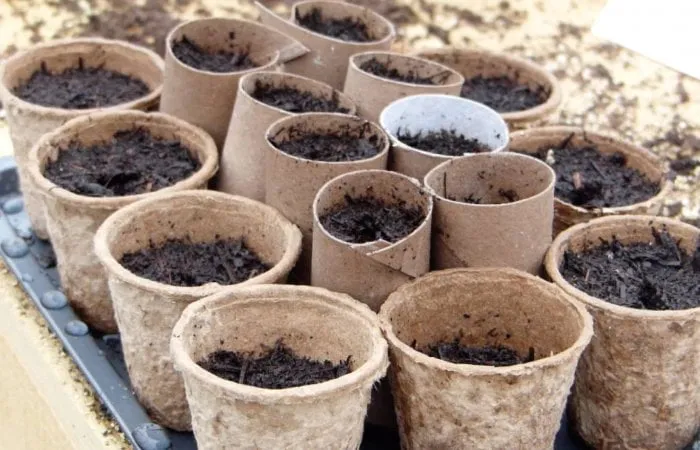
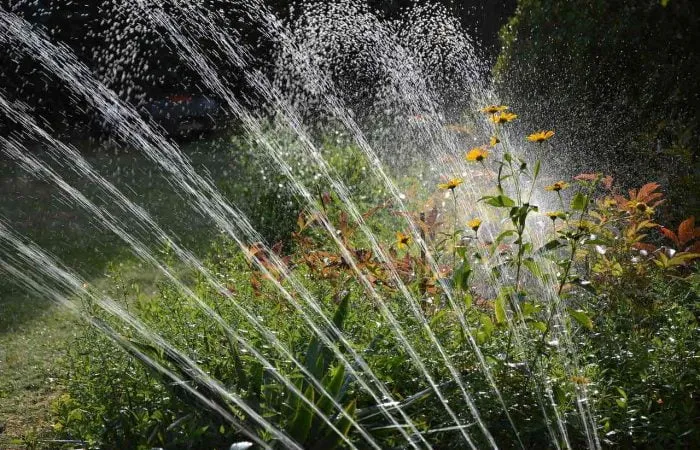
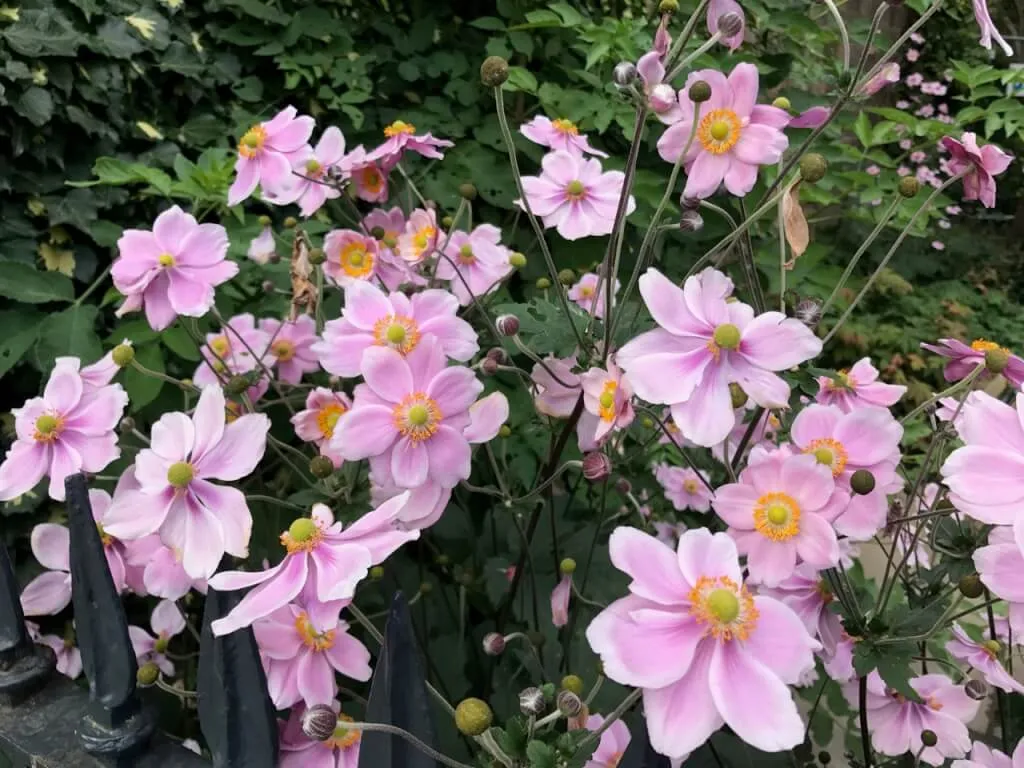

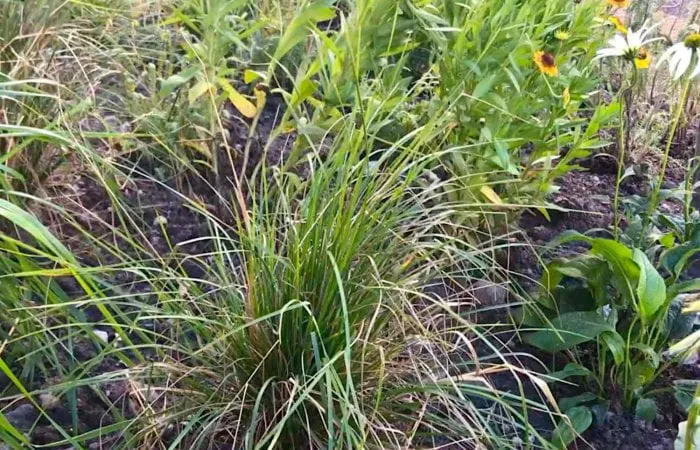
JOIN THE NINJAS

Be the first in line for new Guides, Discount codes and Offers